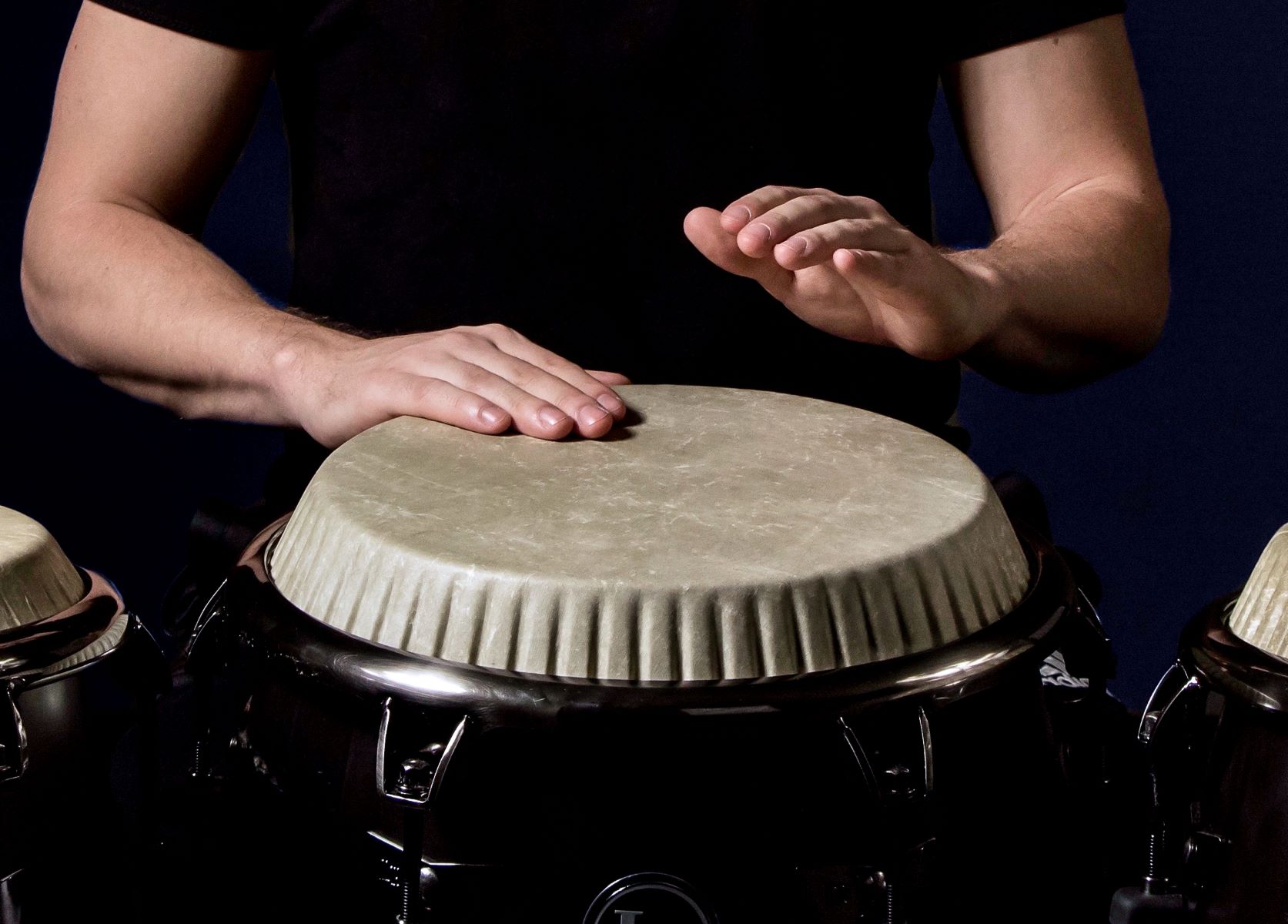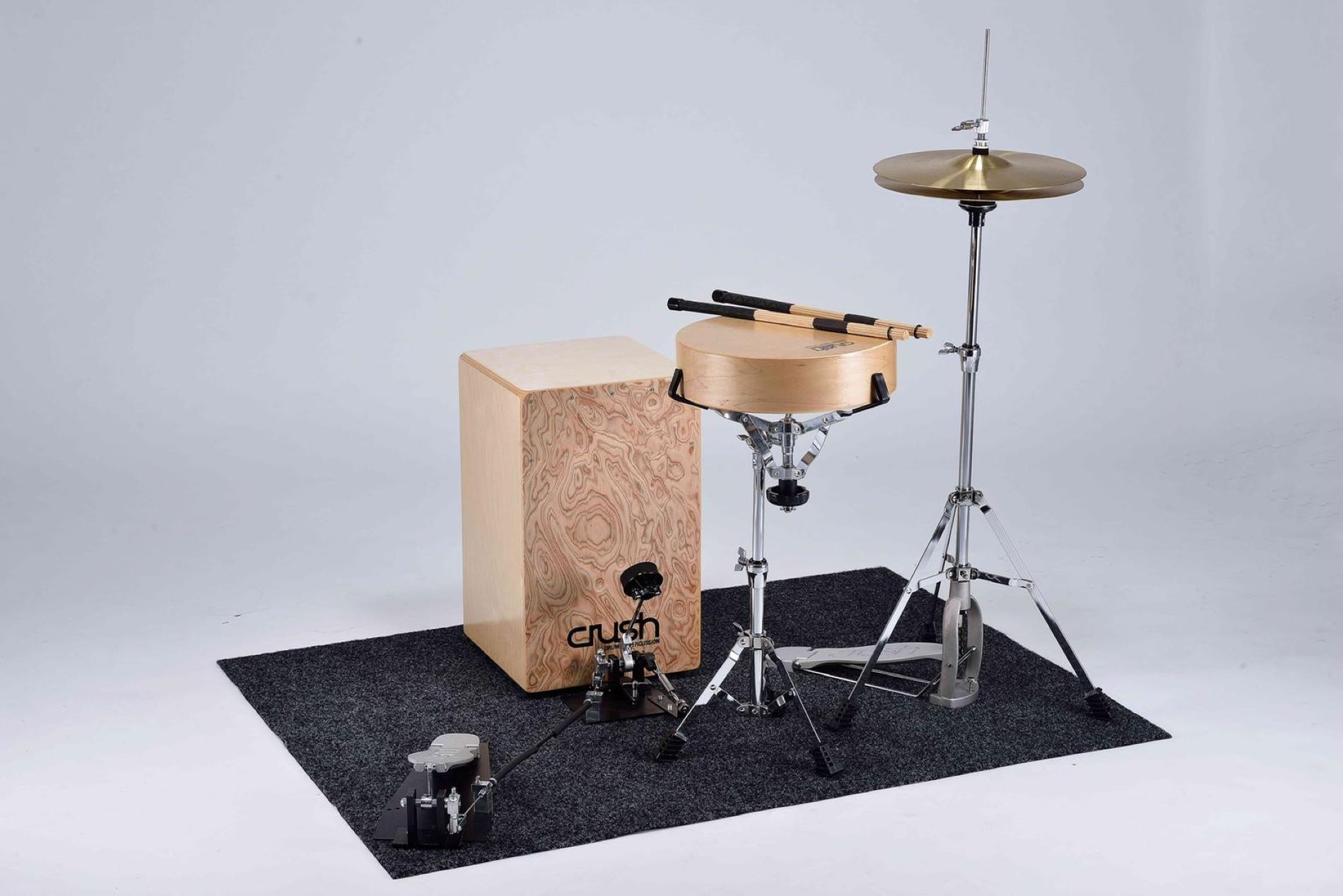Home>Instruments>Drums>How To Play Bass Drums


Drums
How To Play Bass Drums
Published: February 7, 2024
Learn how to play bass drums with our comprehensive guide. Master the techniques and improve your drumming skills today. Discover expert tips and tricks for playing drums.
(Many of the links in this article redirect to a specific reviewed product. Your purchase of these products through affiliate links helps to generate commission for AudioLover.com, at no extra cost. Learn more)
Table of Contents
Introduction
The bass drum, also known as the kick drum, is a fundamental component of a drum set, providing powerful and rhythmic low-end frequencies that form the foundation of any musical piece. Mastering the art of playing the bass drum is essential for drummers across various genres, including rock, jazz, funk, and many others. In this comprehensive guide, we will delve into the intricacies of playing the bass drum, from understanding its anatomy to mastering advanced techniques.
Learning to play the bass drum requires dedication, patience, and a deep understanding of rhythm and coordination. Whether you're a beginner seeking to grasp the basics or an experienced drummer aiming to refine your skills, this guide will provide valuable insights and techniques to elevate your bass drum playing.
Throughout this article, we will explore the anatomy of the bass drum, discuss the essential components of setting up your bass drum, and delve into various techniques and exercises designed to enhance your bass drum performance. Additionally, we will provide practical tips and strategies to help you master the nuances of bass drum playing, empowering you to unlock your full potential as a drummer.
The bass drum serves as the heartbeat of the rhythm section, driving the momentum of a song and anchoring the groove for the entire band. Whether you're laying down a steady backbeat, executing intricate patterns, or delivering thunderous accents, the bass drum's versatility makes it a cornerstone of drumming expression. Understanding how to harness its power and control is pivotal for any drummer looking to make a lasting impact on their audience.
As we embark on this rhythmic journey, we invite you to embrace the artistry and dynamism of the bass drum. By honing your skills and immersing yourself in the rich tapestry of bass drum techniques, you'll unlock a world of creative possibilities and rhythmic innovation. Get ready to dive into the realm of the bass drum, where precision, power, and finesse converge to create a symphony of pulsating rhythms.
Understanding the Bass Drum
The bass drum, a vital component of the drum set, is characterized by its deep, resonant sound and commanding presence. Typically positioned on the floor and played with a foot-operated pedal, the bass drum produces low-frequency tones that underpin the rhythmic structure of music. Understanding the anatomy and function of the bass drum is essential for mastering its nuances and unleashing its full potential.
At its core, the bass drum consists of a cylindrical shell, often made of wood or synthetic materials, which provides the resonant chamber for the sound to develop. The drumhead, typically made of plastic or natural animal skin, is stretched across the shell’s opening and is struck by a beater attached to a pedal. This action causes the drumhead to vibrate, producing the deep, booming sound that defines the bass drum.
When it comes to drum sizes, the bass drum is available in various diameters and depths, with larger dimensions generally yielding a deeper and more resonant sound. The choice of drumhead material and the tuning of the drum also significantly impact the drum’s tonal characteristics, allowing drummers to customize their sound to suit different musical styles and preferences.
One of the defining features of the bass drum is its ability to deliver a powerful and sustained low-end punch, making it a driving force in establishing the rhythmic foundation of a musical piece. Whether providing a steady pulse, punctuating accents, or executing intricate patterns, the bass drum’s versatility makes it a dynamic and expressive instrument in the drummer’s arsenal.
Understanding the role of the bass drum in various musical genres is crucial for drummers aiming to adapt their playing style to different musical contexts. From propelling rock anthems with thunderous beats to laying down intricate jazz patterns with finesse, the bass drum’s adaptability allows it to seamlessly integrate into diverse musical landscapes, shaping the overall feel and groove of the music.
By gaining a deeper appreciation for the construction, sound production, and musical versatility of the bass drum, drummers can develop a more nuanced and informed approach to incorporating this essential instrument into their playing. As we continue our exploration, we will delve into the practical aspects of setting up the bass drum and mastering fundamental techniques to harness its rhythmic prowess.
Setting Up Your Bass Drum
Properly setting up your bass drum is essential for achieving optimal playability, sound quality, and overall comfort while performing. Whether you’re assembling a new drum kit or fine-tuning your existing setup, attention to detail in the configuration of your bass drum can greatly impact your playing experience. From selecting the right drum and pedal to ensuring proper positioning and tuning, each element plays a crucial role in shaping the sound and feel of the bass drum.
When choosing a bass drum, consider factors such as diameter, depth, material, and construction. Larger diameters and greater depths generally produce deeper and more resonant tones, ideal for genres that demand a powerful low-end presence. Additionally, the material of the drum shell can influence the drum’s overall character, with wood and synthetic options offering distinct tonal qualities. Selecting a drum that aligns with your musical preferences and playing style is paramount for achieving the desired sonic impact.
The bass drum pedal, responsible for transferring the drummer’s foot movements into striking force, is a critical component of the setup. Ensuring that the pedal is well-adjusted, responsive, and ergonomically suited to your playing technique is essential for achieving precision and control. Additionally, experimenting with pedal tension and beater placement can help fine-tune the pedal’s feel and responsiveness, allowing for a more personalized and comfortable playing experience.
Positioning the bass drum within your drum kit is another crucial consideration. Placing the drum in a stable and ergonomic position, with the drumhead at an optimal height and angle, can enhance your playing comfort and technique. Furthermore, securing the drum with a sturdy and reliable bass drum pedal and ensuring proper alignment with the rest of the drum set contributes to a cohesive and balanced setup.
Once the bass drum is in place, tuning the drumhead to achieve the desired pitch and resonance is a key step in optimizing its sound. Experimenting with different tuning methods, such as adjusting tension rods and using dampening materials, can help tailor the drum’s tone to suit specific musical styles and playing preferences. Whether aiming for a deep, thunderous thud or a more focused and articulate sound, the tuning process allows for customization and sonic versatility.
By meticulously attending to the setup of your bass drum, you can create an environment that fosters expressive playing, sonic richness, and ergonomic comfort. The next section will delve into essential techniques for playing the bass drum, equipping you with the foundational skills to unlock its rhythmic potential and musical versatility.
Techniques for Playing the Bass Drum
Mastering a diverse range of techniques is crucial for unlocking the expressive potential of the bass drum and integrating it seamlessly into your drumming repertoire. Whether you’re aiming to deliver thunderous accents, execute intricate patterns, or maintain a steady pulse, honing your bass drum techniques is essential for achieving precision, control, and musicality.
One of the fundamental techniques for playing the bass drum is the heel-down technique, where the drummer’s heel remains in contact with the footboard throughout the pedal stroke. This method provides stability and control, allowing for consistent and articulate strikes. Conversely, the heel-up technique involves raising the heel off the footboard, enabling greater power and speed for dynamic playing. Mastering both techniques equips drummers with the versatility to adapt to diverse musical contexts and playing styles.
Employing the slide technique involves using the ball of the foot to slide smoothly along the footboard, facilitating rapid and fluid strokes. This technique is particularly useful for executing rapid-fire patterns and intricate double strokes, enabling drummers to achieve seamless and precise articulation. Additionally, the pivot technique, which involves utilizing ankle motion to pivot the foot on the pedal, offers a nuanced approach to controlling dynamics and articulation, allowing for subtle variations in volume and attack.
Exploring the use of bass drum dynamics, such as accenting specific beats or notes within a musical phrase, adds depth and musicality to your playing. By varying the intensity of your strikes and experimenting with ghost notes, you can infuse your bass drum patterns with expressive nuances, creating dynamic and engaging rhythmic textures. Furthermore, integrating syncopated rhythms and offbeat patterns into your bass drum playing enhances rhythmic complexity and groove, contributing to the overall musical impact of your performance.
Embracing the concept of four-way coordination, which involves synchronizing the movements of both hands and feet, allows drummers to execute intricate and polyrhythmic patterns across the drum set. By integrating bass drum patterns with snare drum accents and cymbal ostinatos, drummers can create compelling rhythmic interplay, expanding the sonic palette and rhythmic depth of their performances.
As you delve into the realm of bass drum techniques, remember that consistent practice, focused attention to detail, and a spirit of experimentation are essential for honing your skills. The next section will introduce exercises designed to enhance your bass drum playing, providing a structured approach to developing dexterity, control, and musical expression.
Exercises to Improve Bass Drum Playing
Developing proficiency in bass drum playing requires dedicated practice and targeted exercises designed to enhance foot control, speed, and coordination. By incorporating focused drills into your practice routine, you can strengthen your bass drum technique, expand your rhythmic vocabulary, and refine your overall drumming prowess. The following exercises are tailored to improve various aspects of bass drum playing, empowering you to unlock your full potential as a drummer.
- Single Stroke Roll: Begin by practicing a consistent single stroke roll, alternating between your right and left foot. Focus on maintaining even strokes and consistent dynamics, gradually increasing your speed and endurance. This exercise builds foundational foot control and develops the ability to execute precise and articulate strokes.
- Double Stroke Roll: Mastering the double stroke roll on the bass drum involves executing two consecutive strokes with each foot. Practice this exercise slowly at first, ensuring that both strokes are evenly spaced and controlled. As you progress, aim to increase the speed and fluidity of your double strokes, cultivating dexterity and agility in your bass drum technique.
- Pattern Repetition: Select a specific bass drum pattern or rudiment and repeat it in a consistent manner, gradually increasing the tempo as you gain proficiency. This exercise fosters muscle memory and precision, allowing you to internalize rhythmic patterns and execute them with confidence and accuracy.
- Dynamic Control: Practice varying the dynamics of your bass drum strokes, alternating between accented and ghost notes. Focus on producing distinct levels of volume and intensity, honing your ability to inject expressive nuances into your playing. This exercise cultivates dynamic control and adds depth to your rhythmic interpretations.
- Polyrhythmic Coordination: Challenge yourself with exercises that involve coordinating bass drum patterns with different rhythmic subdivisions, such as playing triplets on the bass drum while maintaining a steady quarter note pulse with the hi-hat. This exercise enhances four-way coordination, expands your rhythmic vocabulary, and fosters a deeper understanding of rhythmic interplay.
Consistent and deliberate practice of these exercises will contribute to your overall development as a drummer, strengthening your bass drum technique and expanding your rhythmic capabilities. As you integrate these exercises into your practice regimen, focus on precision, control, and musicality, striving to imbue each stroke with intention and expression.
Remember that patience and persistence are essential as you work through these exercises. Over time, you will notice tangible improvements in your foot control, speed, and coordination, laying a solid foundation for versatile and expressive bass drum playing. The next section will offer valuable tips for mastering bass drum techniques, providing insights to further refine your playing and elevate your drumming artistry.
Tips for Mastering Bass Drum Techniques
Mastering bass drum techniques requires a combination of focused practice, attention to detail, and a deep understanding of rhythmic dynamics. As you embark on your journey to refine your bass drum playing, consider the following tips to enhance your technique, expand your musical vocabulary, and elevate your overall drumming performance.
- Maintain a Relaxed Foot Position: When engaging with the bass drum pedal, strive to maintain a relaxed and natural foot position. Tension or rigidity in your foot can impede fluidity and control, so focus on keeping your foot relaxed and responsive to facilitate precise and effortless pedal movements.
- Utilize Ankle Motion: Incorporate ankle motion into your bass drum technique to achieve nuanced dynamics and articulation. By leveraging the flexibility of your ankle, you can produce a wide range of tones and textures, adding depth and expressiveness to your bass drum playing.
- Experiment with Beater Placement: Explore the impact of beater placement on the drumhead to achieve varying tones and textures. Adjusting the distance between the beater and the drumhead can yield different levels of attack and resonance, allowing for customization of your sound based on musical context and personal preference.
- Focus on Consistent Timing: Develop a keen sense of timing and rhythmic precision when executing bass drum patterns. Practice alongside a metronome to internalize steady tempos and ensure that your bass drum strokes align precisely with the rhythmic framework of the music.
- Integrate Bass Drum Variations: Experiment with diverse bass drum patterns, incorporating single strokes, double strokes, triplets, and syncopated rhythms into your playing. Embracing a variety of patterns enhances your rhythmic versatility and allows you to adapt to a wide range of musical styles and genres.
Furthermore, actively listening to and studying the playing styles of accomplished drummers can provide valuable insights and inspiration for refining your own bass drum techniques. By observing and analyzing the nuances of renowned drummers’ performances, you can glean valuable ideas and approaches to incorporate into your practice and playing.
Lastly, maintain a spirit of curiosity and openness to exploration as you refine your bass drum techniques. Embrace new challenges, seek out diverse musical influences, and remain receptive to continual growth and development as a drummer. With perseverance and a commitment to ongoing improvement, you can cultivate a nuanced and expressive approach to bass drum playing that resonates with musical depth and creativity.
By integrating these tips into your practice regimen and performance approach, you can elevate your bass drum technique, expand your rhythmic palette, and enrich your overall drumming experience. As you continue to refine your skills, embrace the journey of continual learning and discovery, allowing your passion for drumming to drive your pursuit of excellence.
Conclusion
As we conclude our exploration of bass drum playing, it’s evident that mastering this foundational element of drumming requires a multifaceted approach encompassing technique, control, and musicality. The bass drum, with its commanding presence and rhythmic prowess, serves as a cornerstone of rhythmic expression, anchoring the pulse of music and driving the momentum of a performance.
By understanding the intricacies of the bass drum’s anatomy, exploring diverse techniques, and engaging in targeted exercises, drummers can cultivate a nuanced and versatile approach to bass drum playing. The fusion of precision, power, and finesse in bass drum technique empowers drummers to deliver compelling rhythmic textures, dynamic accents, and expressive grooves, elevating their musical impact and contributing to the overall sonic tapestry of a performance.
Furthermore, the journey of mastering bass drum techniques is characterized by continual growth, exploration, and a commitment to refinement. Embracing a spirit of curiosity, openness to diverse influences, and a dedication to ongoing practice allows drummers to evolve their playing, expand their rhythmic vocabulary, and imbue their performances with depth and creativity.
As drummers navigate the rhythmic landscape, the bass drum stands as a testament to the fusion of technical proficiency and artistic expression. Whether propelling a driving rock anthem, infusing a jazz standard with subtle nuances, or exploring intricate patterns in various musical genres, the bass drum serves as a canvas for rhythmic innovation and musical storytelling.
Ultimately, the mastery of bass drum techniques transcends technical proficiency, encompassing a profound connection to rhythm, a deep understanding of musical dynamics, and a relentless pursuit of excellence. By integrating the insights, techniques, and exercises presented in this guide, drummers can embark on a transformative journey, unlocking the rhythmic potential of the bass drum and shaping their drumming artistry with finesse and flair.
As you continue to hone your bass drum techniques, remember that the pursuit of mastery is a dynamic and evolving process, fueled by passion, dedication, and a relentless pursuit of rhythmic excellence. Embrace the rhythmic journey, celebrate the nuances of bass drum playing, and let your rhythmic expression resonate with the power and artistry of the bass drum.











